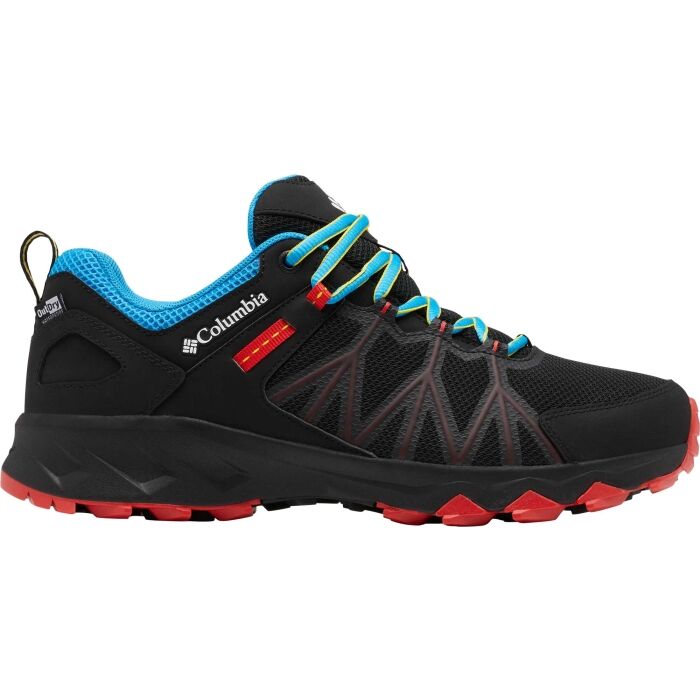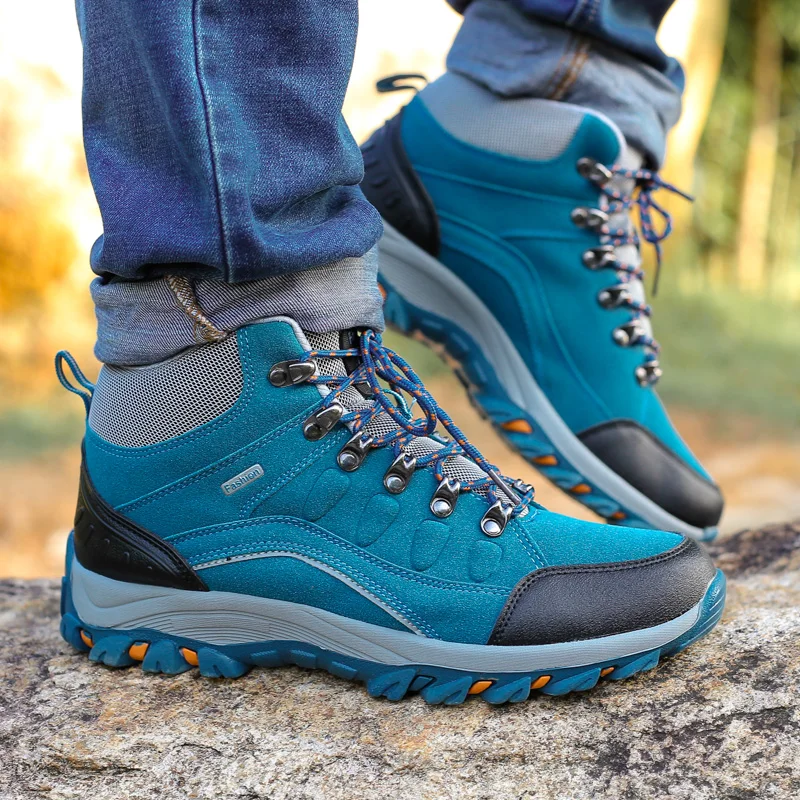Introduction
Waterproof hiking shoes are designed to protect your feet from getting wet while you are hiking in wet conditions such as rain, snow, or crossing streams. These shoes are often made with waterproof materials such as Gore-Tex or other waterproof membranes to prevent water from seeping into the shoe. They typically have a rugged sole and provide good traction to help you navigate through slippery and muddy terrain. Waterproof hiking shoes are a great option for hikers who want to stay dry and comfortable on their adventures.
Embarking on a hiking adventure demands gear that can withstand the elements while keeping you comfortable. Waterproof hiking shoes serve as a critical component for any trekker’s attire, providing reliable traction and shielding your feet from wet conditions. This blog delves into the essential qualities to consider in waterproof hiking shoes, from hydrostatic ratings to breathability, and from traction efficiency to overall durability. We’ll outline our top selections across various categories and impart advice on achieving the perfect fit. Additionally, we’ll offer tips for handling wet terrain and maintaining your footwear. Prepare to step into a world where comfort meets function, and conquer every trail with confidence.
Key Features of Waterproof Hiking Shoes
Choosing the right waterproof hiking shoes is vital for any trail adventure. Key features to look for include waterproof ratings, comfort, grip, and durability. Let’s break down each of these features to help you select the best pair for your needs.
Hydrostatic Head Ratings
The hydrostatic head rating measures how waterproof a fabric is. Higher numbers mean better water resistance. Look for shoes with a high rating to keep your feet dry.
Breathability and Comfort
Waterproof shoes can get hot. Pick ones with good breathability to keep feet cool. Comfort also matters for long hikes, so find shoes with great padding and support.
Traction and Lug Depth
Lug depth on shoes gives better grip on slippery trails. Deep lugs help in mud and wet conditions. For good traction, choose shoes with lugs 4mm or deeper.
Durability and Upper Material
The shoe’s upper material affects its durability. Robust materials protect your feet and last longer. Look for strong fabrics like leather or reinforced mesh for the best durability.
Top Picks for Waterproof Hiking Shoes
Choosing the right waterproof hiking shoes is essential for comfortable and dry feet on trails. Here are our top picks for the best performance, comfort, and value in waterproof hiking shoes.
Best Overall Performance
For unmatched grip and protection, look for hiking shoes with high waterproof ratings. The best ones offer a great mix of water resistance, comfort, and tough outsoles for slippery trails.
Best Cushioning
Hikers seeking extra comfort should focus on shoes with ample cushioning. These provide a soft, plush feel underfoot, making long treks more enjoyable.
Best Stability
Sturdy hiking shoes with good stability are crucial for uneven and rugged terrain. They usually have firm midsoles and good ankle support.
Best Comfort
Comfortable waterproof hiking shoes have padded collars, supportive insoles, and are designed to fit well. They help prevent blisters and discomfort during hikes.
Best Lightweight Option
Lightweight hiking shoes are ideal for longer trips where keeping foot fatigue at bay is essential. These typically have a lower profile and less bulk.
Best Wide Toe Box Design
Hikers with wider feet should look for shoes with a wide toe box. This design offers more room for toes to spread out, enhancing comfort.
Best Value Waterproof Hiking Shoes
For those on a budget, the best value hiking shoes offer solid performance without a high price tag. They are durable, comfortable, and keep feet dry.
Importance of Proper Fit
Getting the right fit in waterproof hiking shoes is crucial for comfort and preventing injuries. The fit affects your overall hiking experience, so pay close attention to size, sock thickness, swelling, and support.
Finding the Right Size
Measure your feet or try on shoes in the evening when your feet are largest. Pick a size that feels snug but not tight, leaving enough room for toes to move.
Considering Sock Thickness
Wear the socks you’ll hike in when fitting shoes. Thick socks need more room, so consider this when choosing your size.
Account for Foot Swelling
Feet swell during hikes. Ensure there’s extra space in your shoes to accommodate this, preventing discomfort and blisters.
Heel and Ankle Support
Choose shoes with good heel and ankle support. They stabilize your feet on uneven ground and reduce the risk of sprains.
Additional Tips for Hiking in Wet Conditions
Trekking through wet environments requires more than just waterproof shoes. Here’s how you can ensure a drier and more comfortable journey.
Using Gaiters
Gaiters are leg coverings that provide an extra layer of protection. They extend from the knee or mid-calf to your shoe, effectively sealing off the gap where water could enter. Opt for waterproof gaiters to prevent water from sneaking in over the top of your shoes.
Caring for Waterproof Hiking Shoes
Post-hike maintenance is crucial for the longevity of your shoes. Clean mud off with a brush and rinse with water. Dry your shoes naturally, avoiding direct heat since it can damage the materials. Apply a waterproof treatment regularly to keep the water resistance strong.
When to Choose Non-Waterproof Options
In hot and dry climates, non-waterproof shoes might be better. They offer more breathability which keeps feet cool. If your path is well-drained or you’re a fast-moving hiker generating lots of heat, go for a ventilated design over waterproofing.
By considering these additional tips, you can tailor your gear and care routine to best suit your hiking conditions, ensuring your feet remain as dry and comfortable as possible, no matter where the trail takes you.
These shoes are typically made with materials that repel water, such as Gore-Tex, and have sealed seams to prevent moisture from seeping in. The soles of waterproof hiking shoes are also designed to provide good traction on slippery surfaces, making them a great choice for hiking in rain, snow, or wet environments. Some popular brands that offer waterproof hiking shoes include Merrell, Salomon, and Keen.
Conclusion
Waterproof hiking shoes are designed to keep hikers’ feet dry and comfortable while trekking through various terrain and weather conditions. These shoes are constructed with materials that are waterproof and often feature a breathable membrane to prevent water from entering the shoe while allowing sweat and moisture to escape. The outsoles of waterproof hiking shoes also provide excellent traction to prevent slipping on wet, muddy, or slippery surfaces. Overall, waterproof hiking shoes are a great option for outdoor enthusiasts who want to keep their feet protected from the elements while enjoying their adventures.
In sum, selecting the right waterproof hiking shoes is pivotal for a successful hike. Make sure they have a robust hydrostatic head rating, are comfortable and breathable, provide excellent traction with deep lugs, and are made from durable materials. Remember to choose a shoe that fits well, consider the thickness of your socks, leave room for foot swelling, and prioritize good heel and ankle support. Additionally, utilize gaiters in wet conditions, maintain your shoes after hikes, and opt for non-waterproof options when trekking in hot, dry climates. With these considerations in mind, you’re all set to hit the trails with dry, comfortable feet.





